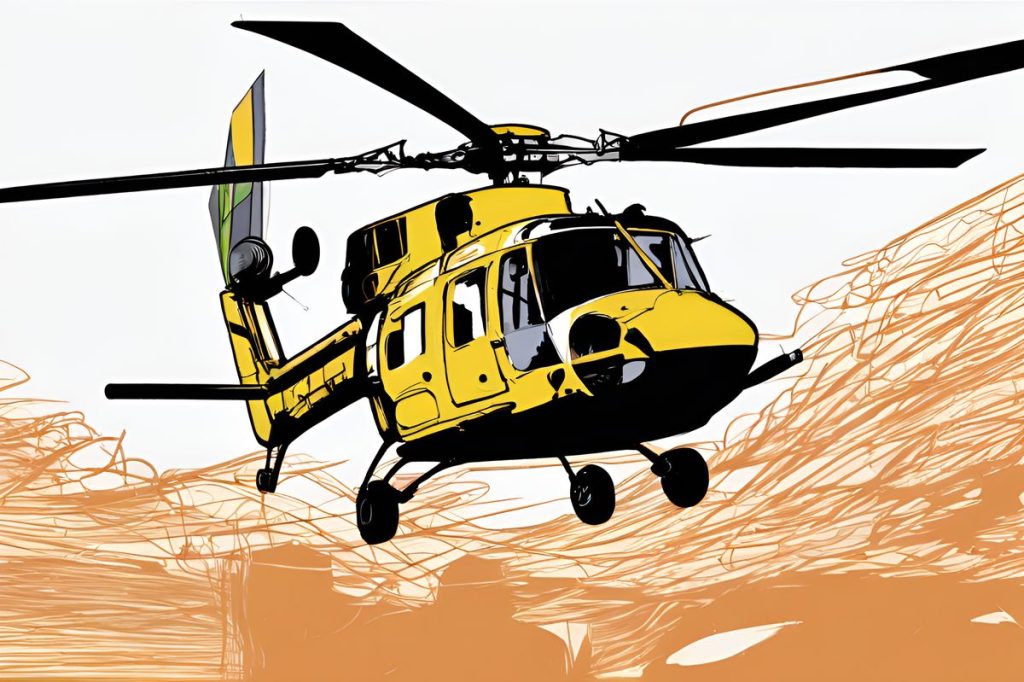Cyprus has upgraded its aerial firefighting capabilities with two Jordanian helicopters and a team of 18 crew members, strengthening its fleet to six aircraft dedicated to fire suppression. Plans are in place to acquire up to ten new firefighting aircraft over the next five years, reflecting proactive strategies in anticipating potential wildfires and enhancing regional partnerships for rapid response.
What has Cyprus done to enhance its aerial firefighting capabilities?
Cyprus has improved its aerial firefighting capabilities by acquiring two Jordanian helicopters and a team of 18 crew members. The island’s fleet now includes six aircraft dedicated to fire suppression, with plans to acquire up to ten new firefighting aircraft over the next five years. This proactive strategy anticipates potential wildfires and strengthens regional partnerships for rapid response.
Jordanian Helicopter Support
Cyprus has fortified its firefighting resources with the addition of two Jordanian helicopters, expanding its aerial response fleet. Andreas Christou, acting director of the Department of Forests, confirmed the upgraded capabilities after queries by local media. In a proactive move by the Cypriot authorities, the two helicopters, along with a team of 18 crew members, have been deployed to reinforce the island’s firefighting potential in preparation for the summer season.
The newly arrived helicopters complement the existing aerial units, which include assets from the police force, the army, the British Bases, and the Department of Forests. These enhancements have been initiated well in advance of the arrival of additional leased firefighting aircraft, as the Cypriot government seeks to augment its preparedness for potential wildfires.
Fleet Expansion and Tender Processes
Cyprus’s strategy to strengthen its firefighting infrastructure is further evident in the government’s commitment to lease and purchase additional aircraft. Currently, with various tenders in progress, the country is in the process of leasing four airplanes and two helicopters. Christou highlighted the dynamic nature of such tender processes, which precludes precise timelines for the operational debut of these assets.
In the meantime, the available resources, including the latest additions, mark a total of six airborne units dedicated to fire suppression. The fleet now boasts a multi-faceted composition, with helicopters constituting the majority and an airplane under the Department of Forests. This collective force was deemed sufficient by Christou, referencing the seven aerial means available for firefighting efforts in the previous year.
Future Acquisitions
Looking ahead, the Cypriot government has set ambitious targets to further expand its aerial firefighting capabilities. Plans are in place to acquire up to ten new firefighting aircraft within the next five years. The transparency of the procurement process was maintained by disclosing the progress of two ongoing tenders related to this expansion plan. Deadlines for the submission of bids for airplanes and helicopters have been clearly outlined, with the former having closed on April 15 and the latter set for the end of April.
In a candid exposition to parliament earlier in the year, it was revealed that Cyprus faced a temporary gap in its aerial firefighting capacity, with the forestry department’s aircraft under repair. This underscored the significance of the recent enhancements and the importance of swift, effective tender processes in maintaining continuous readiness for wildfire outbreaks.
Joint Efforts for Robust Firefighting
The collaborative approach between Cyprus and Jordan exemplifies the regional solidarity and shared commitment to combating the threat of wildfires. With the Mediterranean region facing increased risks due to climate change, such partnerships are pivotal in ensuring rapid and effective responses to fires. The bolstered fleet in Cyprus is a testament to forward-thinking policies and the relentless pursuit of safety for its landscapes and communities.
What has Cyprus done to enhance its aerial firefighting capabilities?
Cyprus has improved its aerial firefighting capabilities by acquiring two Jordanian helicopters and a team of 18 crew members. The island’s fleet now includes six aircraft dedicated to fire suppression, with plans to acquire up to ten new firefighting aircraft over the next five years. This proactive strategy anticipates potential wildfires and strengthens regional partnerships for rapid response.
How has Cyprus benefited from the addition of two Jordanian helicopters?
Cyprus has fortified its firefighting resources with the addition of two Jordanian helicopters, expanding its aerial response fleet. The new helicopters, along with a team of 18 crew members, enhance the island’s firefighting potential in preparation for the summer season. These additions complement existing aerial units from various departments and organizations within Cyprus, further strengthening the overall firefighting capabilities.
What is Cyprus’s strategy for fleet expansion in terms of firefighting aircraft?
Cyprus is committed to leasing and purchasing additional firefighting aircraft to bolster its aerial firefighting capabilities. Currently, the country is in the process of leasing four airplanes and two helicopters through various tender processes. Plans are also in place to acquire up to ten new firefighting aircraft over the next five years. This fleet expansion strategy aims to enhance preparedness for potential wildfires and ensure continuous readiness for firefighting efforts.
How does the joint effort between Cyprus and Jordan reflect regional cooperation in firefighting?
The collaboration between Cyprus and Jordan in enhancing firefighting capabilities exemplifies regional solidarity and shared commitment to combating the threat of wildfires. Given the increased risks faced by the Mediterranean region due to climate change, such partnerships are crucial for ensuring rapid and effective responses to fires. The strengthened fleet in Cyprus is a testament to forward-thinking policies and the dedication to safeguarding landscapes and communities from the impact of wildfires.

